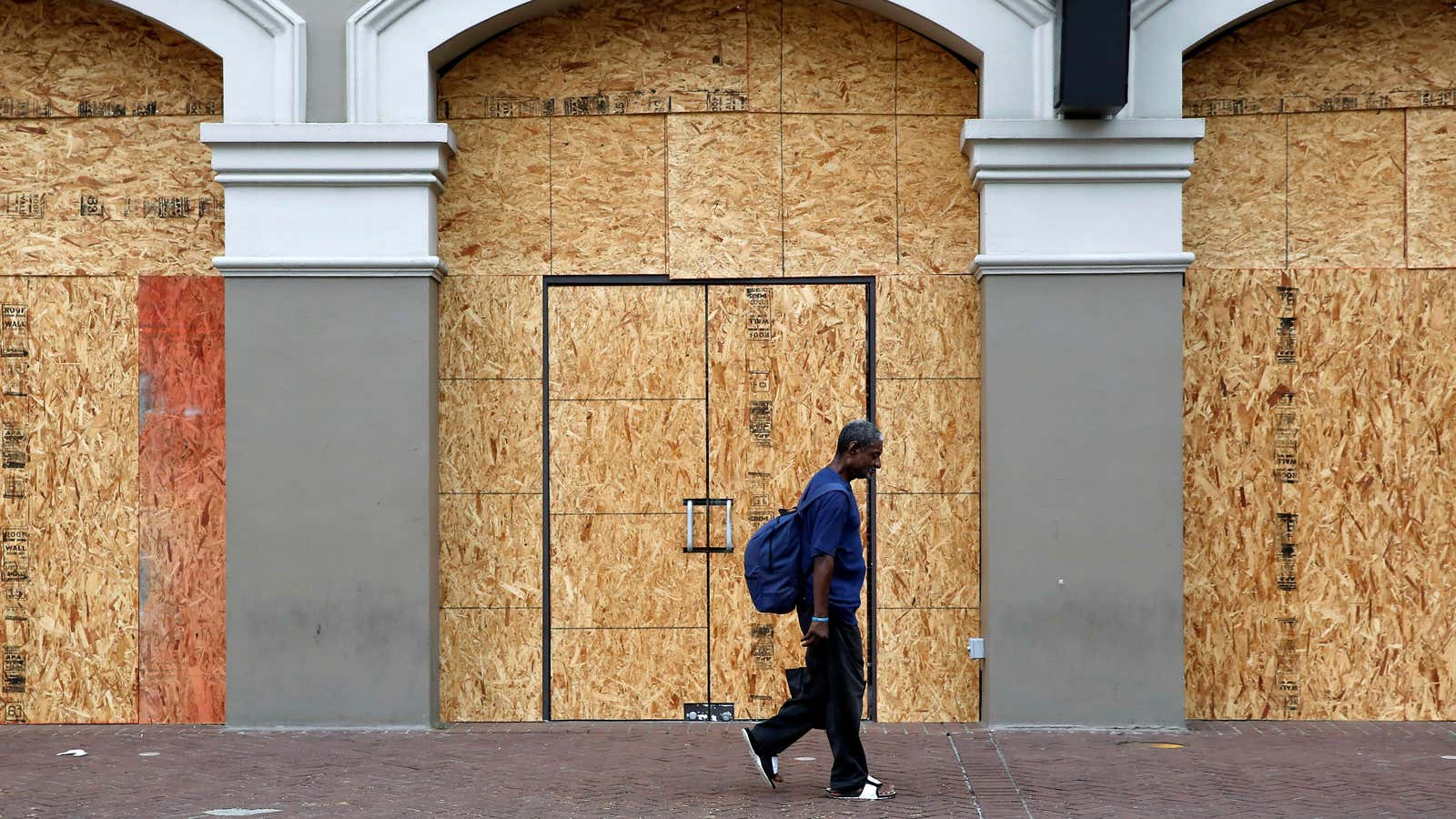Communities around the US are already feeling the effects of climate change in the form of extreme flooding. The summer of 2021 brought devastating floods to places ranging from New York City to small-town Tennessee.
Scientists predict it will only get worse over time, but the effects of worsening floods won’t be felt equally.
A new study in the scientific journal Nature Climate Change finds that Black communities face a disproportionately high risk of major flood damage. Over the next 30 years, places with the highest concentration of Black Americans will see their risk of material losses due to flooding increase by 40%, double the rate of areas with a Black population of less than 1%.
The environmental injustice of flood risk
The extreme floods of today have hit low-income white communities the hardest. But that risk eventually will shift to primarily Black communities. The reasons are both environmental and historical.
The census tracts with the highest concentrations of Black Americans are still in Deep South states like Georgia, Alabama, Mississippi, and Louisiana, where enslaved Africans were first brought during the transatlantic slave trade. These also are areas that are especially sensitive to worsening floods as the climate warms. Coastal states from Texas all the way up to Virginia face the greatest increase in flood risk, due to the combined effects of rising sea levels and worsening hurricanes.
Similar analyses of flood risks for other groups weren’t as conclusive; projections for places with high concentrations of Hispanic or Native American people didn’t necessarily include an increased risk of floods.
Building in a flood zone
Beyond this relative risk among demographic groups, the US as a whole is shaping up to be hit a lot harder by flooding over the next three decades. The researchers project a 26.4% increase in flood risk, which could amount to some $32.1 billion in damage every year. But not all of it is due to intensifying weather. As the population grows, the US will continue to develop land for cities and towns in high-risk places, making the cost of flood damage even more severe. In fact, development is projected to have four times the impact of climatic changes on losses caused by flooding.
All of this means that as US communities continue to build, they will have to adapt to the growing flood threat. As the residential construction industry races to close a 3.8 million-unit housing shortage, it will be important to build homes with a flood-resilient design, or not build in some coastal areas at all. So far, these are not lessons US communities are keen to learn—flood-zone construction is up overall in a third of coastal states since 2010.
Knowing that some communities will be hit worse by flooding than others makes the need for adaptive strategies all the more urgent.
